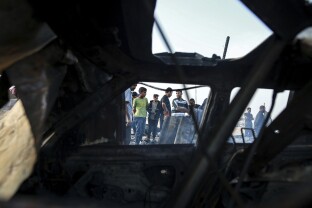Under United States military standards, Israel’s deadly strike in Rafah in late May would have required the country to deliberately accept a risk to civilian lives, U.S. military materials reviewed by NOTUS show.
According to Israel Defense Forces social media and U.S. Department of Defense documents, the May 26 strike, which was responsible for the deaths of more than 40 civilians, was planned only 180 meters from known refugee shelters and well within what the Department of Defense calls “Danger Close.”
A strike within that distance would have needed the express approval of an “on-scene ground commander” under U.S. military standards because of the high risk it poses to civilian life, per a U.S. Air Combat Command spokesperson. Weapons experts and visual evidence analyzed by multiple news outlets confirmed that the bombs used in the Rafah strike were American-made GBU-39 bombs. Those weapons have a risk distance of 200 meters, according to U.S. military documents reviewed by NOTUS.
